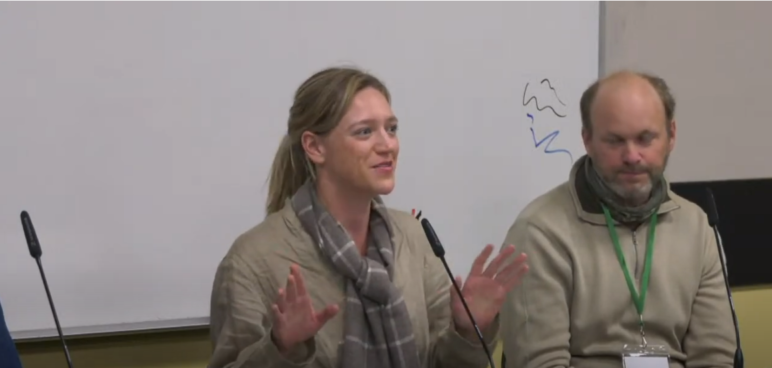This article is part of the series YIMBYtown 2022
The conversation shared below was part of the YIMBYtown 2022 conference, cohosted by Sightline Institute and Portland: Neighbors Welcome.*

From cottage clusters to tiny houses on wheels, as well as all sorts of new streamlined ways to build accessory dwelling units (ADUs), recent legislation passing in states across the US has given developers the go-ahead to find new ways to provide affordable housing solutions to help address the housing shortage.
This panel features four professionals with experience navigating the policies to build new ADUs and other innovative forms of urban infill housing. Kate Macfarlane from Sightline moderated the discussion:
- Annie Fryman, Director of Cities at ADU startup Abodu, explains how California’s statewide ADU reform has streamlined permitting of backyard cottages and allows Adobu to deliver factory-built homes in as little as 30 days.
- Stewart Hulick, with Urban Nest Realty in Portland, Oregon, describes a realtor’s perspective on ADUs, including appraisal and property tax implications.
- Kol Peterson, founder of Accessory Dwelling Strategies LLC and author of Backdoor Revolution: The Definitive Guide to ADU Development, talks about the most affordable way to add a backyard home: tiny houses on wheels.
- Eli Spevak, owner of Orange Splot LLC, breaks down the innovative code hacks that he uses to fit more homes on a lot, including ADU condos, detached bedrooms, courtyard cottages, and RVs.
Related:
- Backyard Homes Are Great for Owners of Small Homes
- How Backyard Cottages Could Help Close the Affordable Housing Gap
- Will Washington Do The Right Thing on Backyard Homes This Year?
- Anchorage Needs More Moderately Priced Homes: Let’s Start With ADUs
*YIMBYtown 2022 occurred April 11–13 in Portland, Oregon, the fourth annual gathering (after some COVID delays) of “Yes in My Back Yard” (YIMBY) community leaders, organizers, planners, policymakers, educators, and housing providers eager to share resources and strategies for building more affordable, sustainable, and equitable communities.

